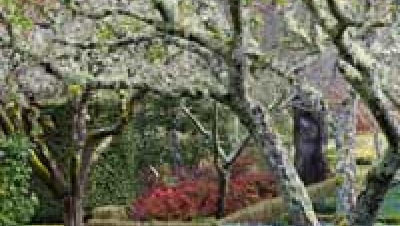Photo from Pixabay
Children spend less time outdoors today than any previous generation, as stated by the NRPA. Health professionals and government officials alike often warn parents that sedentarism is strongly linked to the rising childhood obesity rate, but being indoors can have other health effects. The EPA has stated that many homes in the U.S. have between two and five times worse air quality than the air outside. Indoor air pollution is linked to respiratory and cardiovascular problems alike, so it is important for all households to do their share to reduce their reliance on toxic furnishings and products. How can parents teach kids about the importance of pure air quality while they're enjoying a day out in nature?
Leaves Tell A Tale
There is a good reason why health professionals often recommend that people include more indoor plants in their décor scheme. Plants give out life-giving oxygen, but also absorb toxins. To show kids how leaves ‘breathe,’ invite them to join you in a fun outdoor experiment in your garden. All you need to do is wrap a few leaves (still on the branch) in a plastic bag, and tie the end of the bag with string. In about half an hour, you will notice that the bag is full of droplets and that it contains a small amount of green liquid. This easy experiment reveals that leaves ‘transpire.’ They take in nutrients and expel what they do not need through their microscopic pores. Leaves interact with their environment, ‘breathing out’ the stuff our lives depend on – oxygen.
How Can Leaves Help Improve Indoor Air Quality?
Scientists at the National Research Council of Italy recently concluded that plants, when used alongside smart sensor-controlled cleaning technologies, could improve air quality sustainably and affordably. Plants in themselves have several mechanisms that can enhance health. Apart from producing oxygen and absorbing carbon dioxide as part of the process of photosynthesis, they also passively absorb toxins through their leaves and roots. Finally, they increase humidity levels, which is particularly important for those living in dry climes. To encourage your children to do their share to improve air quality, encourage them to help with the care of plants in your home. They can be in charge of watering, pruning, and even changing the soil when necessary.
Creating Pollution To Stop It
Another fun outdoor experiment you can carry out if it’s not too windy is ‘creating pollution’ – with a view of stopping it in the long-term, of course. Simply add different ‘offending items’ to a glass jar. For instance, light a match and quickly drop it into the jar, shutting the lid. Children can, therefore, see how smoke ‘dirties’ the air, much the same as a fireplace might in a poorly ventilated home. Have a clean jar next to the ‘dirty’ one, so children can visually appreciate the difference between the two.
Being outside is a great way for kids to appreciate the beauty and freedom of nature. However, they should also understand that in the same way that the Great Outdoors can be ruined by pollution, so too can our homes. Talk about a few items that can harm their health – including toxic cleaning products and furniture made with pressed wood. Ask your children about steps the whole family can take to reduce reliance on these items and commit to making a change.








